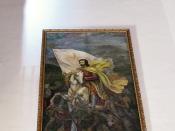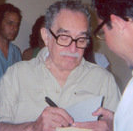The depiction of the workings of a society can possibly be best expressed by an inner source belonging to the proposed inherently faulted society. Such authority is often manifested in an authors who's work depicts the underlying corruption in the community. Gabriel GarcÃÂa Márquez illustrates the flaws of his home country; Columbia in the Chronicles of a Death Foretold through the usage of a kitchen motif. Corruption occurs at different levels, ranging from the ill-intended nature of humans to religion and political inactivity and bias. Márquez associates each level with the dual nature of a kitchen- a location connoting warmth and health but also the centre of butchering and raw filth. Márquez plays on this dual nature and while equating the Columbian society to a kitchen, he unveils the dichotomy bridging the sober superficial appearance to the tainted underlying nature of his society. Márquez's work serves to form a verisimilitude between his fictional Columbian town and the reality incumbent in his home town.
The kitchen motif is primarily evident in the autopsy of Santiago Nasar. Márquez employs the leitmotif of "guts" to set a somber, grotesque mood provoking a sense of filth and corruption. Nasar is depicted earlier in the novel as symbolically being the "meat" to be cut at the "innards table" (Márquez 58). The Vicario twins in preparation for their massacre publicly announce that they were to cut "Santiago Nasar's guts out" ( Márquez 68). The feral diction contrasts their "reputation as good people" ( Márquez 59) and like the kitchen disrobes their dual dress- the civil exterior and the savage interior. The imagery illustrated by the twins' manifests into actuality with the autopsy as Nasar is ruthlessly cut open and dissected upon. Akin to the "meat', Nasar's livers and guts are torn from his body in an...


